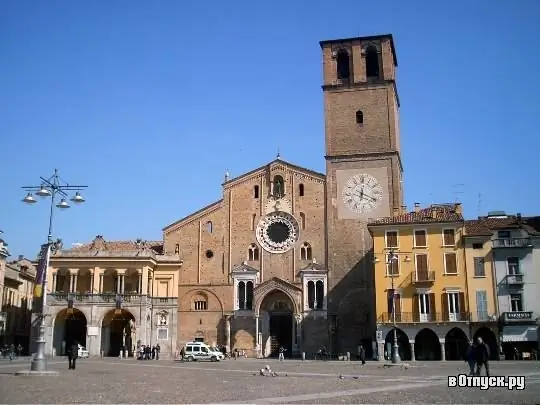
Description of the attraction
Lodi is a small town in the Italian region of Lombardy, located on the right bank of the Adda River, the administrative center of the province of the same name.
Lodi was founded in ancient times by the Celtic tribes, and in the era of the Roman Empire it was called Laus Pompeia (possibly in honor of the consul Pompey Strabo) and was an important settlement, as it stood at the intersection of a busy road and a river. In the 3rd century the city became a bishopric and its first bishop, San Bassiano, is today considered the patron saint of Lodi. Around the 10th century, the independent commune of Lodi fiercely repelled the attack of the Milanese troops, but a century later the city was destroyed by the same Milanese. Only in 1158, on the orders of Frederick Barbarossa, Lodi was rebuilt, and the old city was preserved within the Lodi Vecchio area.
Beginning in the 13th century, the inhabitants of the city began to build a network of hydraulic structures - hundreds of miles of artificial canals and rivers, known as the Consorcio di Muzza, were used to supply water to the countryside, which helped transform some arid zones into highly fertile agricultural lands.
In the 14th century, Lodi became part of the possessions of the Visconti family, by whose order a castle was built in the city. And in 1454, representatives of all independent principalities and duchies of the Apennine Peninsula met here and concluded an agreement, known as the Peace Treaty of Lodi, on the unification of Italy. True, this treaty lasted only 40 years.
After Visconti, Sforza ruled in Lodi, then the French, Spaniards, Austrians, and in 1786 the city became the capital of the province of the same name. It was here in May 1796 that the young Napoleon Bonaparte, who had recently become a general, defeated the Austrians and began his military career.
Lodi has preserved a lot of historical and architectural monuments, which to this day attract tourists here. Piazza della Vittoria, framed on all sides by porticoes, is considered one of the most beautiful squares in Italy. The Basilica of Virginia Assunta and the building of the City Hall of Broletto are located here. And Piazza Broletto is notable for the 14th century baptismal font made of Verona marble. Interesting churches of Lodi - Beata Vergine Incoronata, San Francesco, San Lorenzo with frescoes Callisto Piazza, Santa Maria Maddalena - the best example of Baroque architecture in the city, Sant Agnese in the style of Lombard Gothic, San Filippo Neri in the Rococo style, San Cristoforo. Secular buildings have also survived - the medieval Palazzo Veskovile, rebuilt in the 18th century, the partially destroyed castle of Torrione and the Palazzo Mozzanica of the 15th century.






